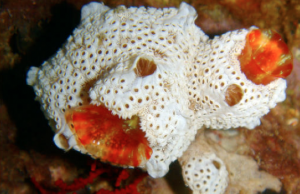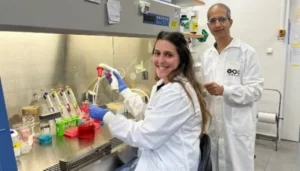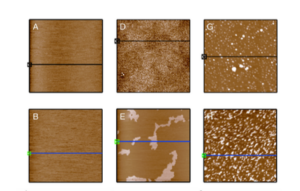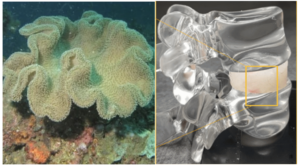Biodiversité au Moyen-Orient : un musée/centre de recherche de premier plan inauguré en 2017 à Tel Aviv

[:fr]Centre mondialement reconnu de recherche en taxonomie (identification, classification et nomination des espèces et des organismes vivants), le Musée Steinhardt d’Histoire naturelle, Centre national d’Israël de recherche sur la Biodiversité, ouvrira ses portes au public en janvier 2017 sur le campus de l’Université de Tel-Aviv, avec pour mission de former la prochaine génération d’experts sur la faune et la flore d’Israël et du Moyen-Orient. D’une superficie de 9 620 m2, le Centre attend 100 000 visiteurs par an.
« La recherche taxonomique est la clé de la préservation des écosystèmes essentiels aux sociétés humaines« , explique le Prof. Tamar Dayan, directrice du musée. » Elle est également importante pour l’agriculture, la santé, la biotechnologie et la sécurité. Le travail de taxonomie entrepris au Musée est crucial pour la recherche fondamentale et appliquée sur tous les organismes vivants. Nommer c’est connaitre, ou comme l’a dit Carl von Linné, père de la nomenclature, « La connaissance des choses périt par l’ignorance du nom ».
Le Musée Steinhardt d’Histoire Naturelle et Centre national d’Israël pour les études de la biodiversité, est un trésor national inestimable renfermant environ 5 millions de spécimens d’animaux et de plantes qui racontent l’histoire de la biodiversité au Moyen-Orient au cours du siècle passé et celle de l’humanité à travers des millénaires. Parmi les spécimens sont présentés le dernier guépard du Moyen-Orient, les premiers humains modernes hors de l’Afrique, les derniers léopards de Galilée et des montagnes de Judée, et des vestiges des premières communautés agricoles du Moyen-Orient.
Le Musée, dont l’ouverture au public est prévue en janvier 2017, est reconnu comme infrastructure nationale de recherche sous les auspices de l’Académie nationale israélienne des Sciences, et est associé bénéficie d’une association avec la Faculté des Sciences de la vie, la Faculté de Médecine, et la Faculté des Sciences humaines. Il regroupe 80 spécialistes et ses principaux objectifs sont l’enregistrement de la biodiversité, la recherche scientifique, la formation professionnelle et la l’organisation de programmes de sensibilisation du public. Les études du Centre servent de point d’appui aux décisions nationales dans un grand nombre de domaines, y compris l’agriculture, la gestion des zones humides, l’exploitation des ressources marines, la santé, la préservation des paysages et de la lutte biologique contre les parasites.
Le nouveau bâtiment, qui comptera 9 620 m2, accueillera 100 000 visiteurs par an. Il comprendra entre autre l’Arche, un espace d’exposition évoquant l’Arche de Noé qui présentera aux visiteurs aperçu parmi les millions de spécimens fascinants de la collection du Musée, l’aile du monde de la connaissances, espace réservé à la sensibilisation et aux programmes d’enrichissement destiné à ouvrir le monde de l’enseignement supérieur et de la recherche scientifique aux jeunes de tous les milieux, ainsi qu’à la formation de gardes forestiers et de guides de la nature.
Le nouveau bâtiment du Musée été réalisé grâce à Michael Steinhardt, un des principaux donateurs de l’Université de Tel-Aviv, Docteur honoris causa de l’UTA, ancien président du Conseil des gouverneurs, et de sa femme, Judy. Les activités et le processus de construction du Musée sont également soutenus par le Comité de planification et de budgétisation du Conseil israélien de l’enseignement supérieur, les divers ministères gouvernementaux, le F.N.J. et des donateurs et fondations privés.
Dr Sivan Cohen-Wiesenfeld, rédactrice de recherche pour AFAUTA, association des amis français de l’Université de Tel Aviv[:en]Tel Aviv University’s Steinhardt Museum of Natural History, Israel National Center for Biodiversity Studies, is training the next generation of animal and plant experts on Israel and the Middle East. In the rarified world of ascidian taxonomy – a field involving the classification of marine creatures that cling to hard surfaces on the ocean floor – Dr. Noa Shenkar of TAU’s Steinhardt Museum of Natural History, Israel National Center for Biodiversity Studies, has carved out a role as one of the world’s foremost authorities in the field. With her unique knowledge of ascidians from the Red and the Mediterranean Seas, Shenkar’s classifications are today considered definitive.
Prof. Tamar Dayan, Director of the Museum, says, “Taxonomic research – identifying species and understanding their basic biology and evolutionary relationships – is key to conservation, sustainable use, and management of ecosystems. It’s also important for agriculture, health, biotechnology and security.
“The taxonomic work at the Museum is crucial for the basic and applied study of all living organisms. To cite the founding father of taxonomy, Carolus Linnaeus, ‘If the names are unknown, knowledge of the things also perishes,’” quotes Dayan.
Steinhardt Museum
The Steinhardt Museum of Natural History, Israel National Center for Biodiversity Studies, is a priceless national treasure with about 5 million specimens of animals and plants that tell the story of biodiversity of the Middle East during the past century and the history of humankind across millennia. Among the unique specimens are the last cheetah from the Middle East, the earliest modern humans out of Africa, the last leopards from the Galilee and the Judean Mountains, and evidence of the earliest farming communities in the Middle East.
Slated to open to the public in January 2017, the Museum is recognized as a national research infrastructure under the academic auspices of the Israel National Academy of Sciences and Humanities, and benefits from an association with TAU’s George S. Wise Faculty of Life Sciences, the Sackler Faculty of Medicine, and the Lester and Sally Entin Faculty of Humanities. It has an 80-strong staff and its core objectives are recording biodiversity, performing scientific study, training professionals and holding public outreach programs. Research at the Museum supports policy and decision makers across a wide range of areas, including agriculture, wetland management, marine resource exploitation, flight safety, health, landscape conservation and biological pest control, among others.
Each year, about 100,000 visitors are expected to visit the Steinhardt Museum. The new building encompasses 9,620 square meters and has many unique features. These include the Ark – an exhibition space evoking the Biblical Ark of Noah that will enable families and other visitors to get a rare glimpse of fascinating specimens from among the millions in the collection. Other facilities include the World of Knowledge Wing – a space for outreach and science-enrichment programs that will open up the world of higher education and scientific research to young people from all backgrounds, as well as train park rangers and nature guides.[:]








